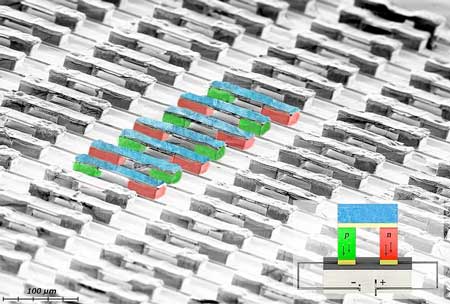 Scientists have significantly improved the processing of thermoelectric devices so that they become quicker, more reliably and suitable for integration in microchips. This represents a decisive step towards the broad application of thermoelectric components in microtechnology.
Scientists have significantly improved the processing of thermoelectric devices so that they become quicker, more reliably and suitable for integration in microchips. This represents a decisive step towards the broad application of thermoelectric components in microtechnology.
Nov 26th, 2018
Read more
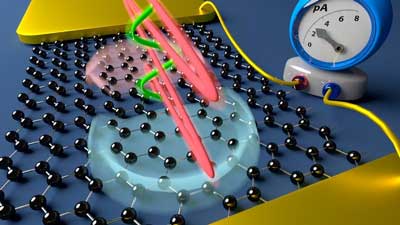 Researchers have succeeded in using ultra-short laser impulses to precisely control electrons in graphene.
Researchers have succeeded in using ultra-short laser impulses to precisely control electrons in graphene.
Nov 26th, 2018
Read more
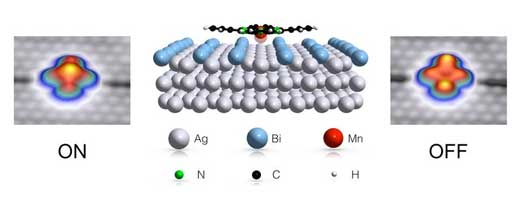 For the first time, physicists have successfully positioned an organic molecule on a substrate realizing two stable configurations. This may have application potential in molecular spintronics.
For the first time, physicists have successfully positioned an organic molecule on a substrate realizing two stable configurations. This may have application potential in molecular spintronics.
Nov 26th, 2018
Read more
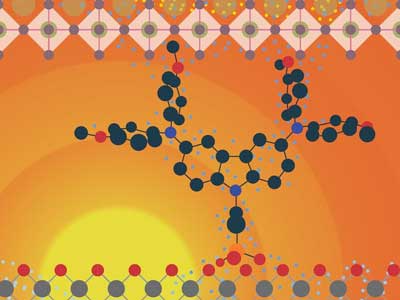 Scientists have discovered a new method for producing efficient contact layers in perovskite solar cells. It is based on molecules that organise themselves into a monolayer.
Scientists have discovered a new method for producing efficient contact layers in perovskite solar cells. It is based on molecules that organise themselves into a monolayer.
Nov 26th, 2018
Read more
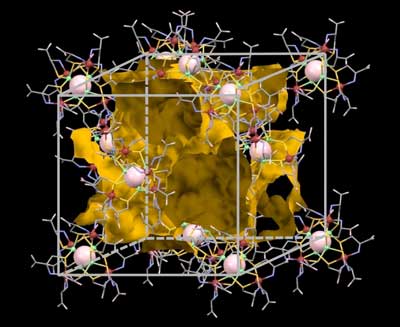 Inspired by transport mechanisms found in living cells, researchers develop a novel crystalline material that rapidly conducts charged potassium ions, and may lead to cheaper and safer replacements for lithium-ion batteries in electronics and cars.
Inspired by transport mechanisms found in living cells, researchers develop a novel crystalline material that rapidly conducts charged potassium ions, and may lead to cheaper and safer replacements for lithium-ion batteries in electronics and cars.
Nov 23rd, 2018
Read more
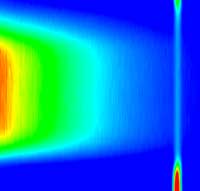 Scientists report the gate switching of ultrafast photoluminescence in monolayer graphene and analyzed its underlying mechanism both experimentally and theoretically.
Scientists report the gate switching of ultrafast photoluminescence in monolayer graphene and analyzed its underlying mechanism both experimentally and theoretically.
Nov 22nd, 2018
Read more
 Physicists have developed a new test to spot where the ability to exploit the power of quantum mechanics has evolved in nature.
Physicists have developed a new test to spot where the ability to exploit the power of quantum mechanics has evolved in nature.
Nov 22nd, 2018
Read more
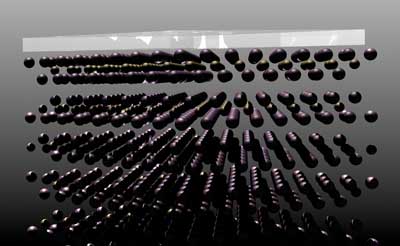 Calculations point to a new source of topological materials.
Calculations point to a new source of topological materials.
Nov 22nd, 2018
Read more
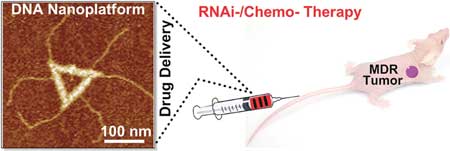 A tailored DNA nanoplatform carries chemotherapeutic drugs and RNA interference toward multidrug-resistant tumors.
A tailored DNA nanoplatform carries chemotherapeutic drugs and RNA interference toward multidrug-resistant tumors.
Nov 21st, 2018
Read more
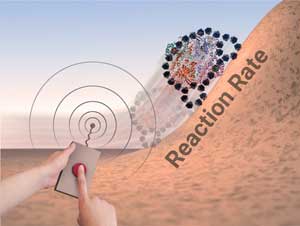 Scientists developed a method to enhance the activity of enzymes by using radio frequency radiation. The method requires making a special complex consisting of enzymes and magnetic nanoparticles.
Scientists developed a method to enhance the activity of enzymes by using radio frequency radiation. The method requires making a special complex consisting of enzymes and magnetic nanoparticles.
Nov 21st, 2018
Read more
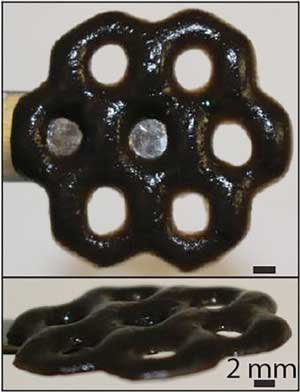 By combining seaweed-derived alginate with the nanomaterial graphene oxide, researchers have developed a new material that's durable and can respond dynamically to its environment.
By combining seaweed-derived alginate with the nanomaterial graphene oxide, researchers have developed a new material that's durable and can respond dynamically to its environment.
Nov 21st, 2018
Read more
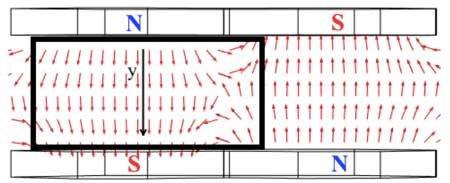 Researchers have studied the influence of inhomogeneity of magnetic field applied during the fabrication process of thin-film structures made from nickel-iron and iridium-manganese alloys, on their properties.. These systems can be used in various types of magnetic field sensors.
Researchers have studied the influence of inhomogeneity of magnetic field applied during the fabrication process of thin-film structures made from nickel-iron and iridium-manganese alloys, on their properties.. These systems can be used in various types of magnetic field sensors.
Nov 21st, 2018
Read more
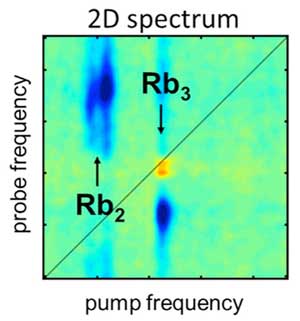 A research team has succeeded for the first time in applying 2D-spectroscopy to isolated molecular systems and thus in tracing the interactive processes at a molecular level more precisely.
A research team has succeeded for the first time in applying 2D-spectroscopy to isolated molecular systems and thus in tracing the interactive processes at a molecular level more precisely.
Nov 21st, 2018
Read more
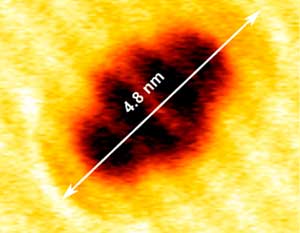 Using hydrogen lithography, researchers have constructed an artificial molecule that both meets the electronic structure definition and demonstrates a nontrivial geometry: a cyclic atomic configuration spanning three dimer rows.
Using hydrogen lithography, researchers have constructed an artificial molecule that both meets the electronic structure definition and demonstrates a nontrivial geometry: a cyclic atomic configuration spanning three dimer rows.
Nov 21st, 2018
Read more
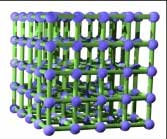 Using advanced computer simulations, they found that the temperature at which metal-organic frameworks suddenly expand or shrink is tuneable. Their results allow the design of thermostats that work at the molecular level.
Using advanced computer simulations, they found that the temperature at which metal-organic frameworks suddenly expand or shrink is tuneable. Their results allow the design of thermostats that work at the molecular level.
Nov 21st, 2018
Read more
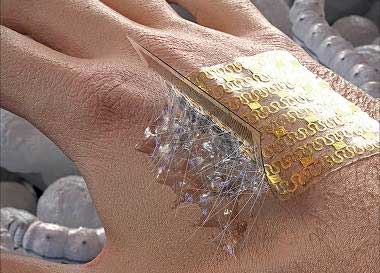 Researchers employed a calcium-modified silk fibroin as a biocompatible and strong adhesive. This technology led to the development of epidermal electronics with strong adhesion for patients who need drug injections and physiological monitoring over a long time.
Researchers employed a calcium-modified silk fibroin as a biocompatible and strong adhesive. This technology led to the development of epidermal electronics with strong adhesion for patients who need drug injections and physiological monitoring over a long time.
Nov 21st, 2018
Read more
 Scientists have significantly improved the processing of thermoelectric devices so that they become quicker, more reliably and suitable for integration in microchips. This represents a decisive step towards the broad application of thermoelectric components in microtechnology.
Scientists have significantly improved the processing of thermoelectric devices so that they become quicker, more reliably and suitable for integration in microchips. This represents a decisive step towards the broad application of thermoelectric components in microtechnology.















 Subscribe to our Nanotechnology News feed
Subscribe to our Nanotechnology News feed